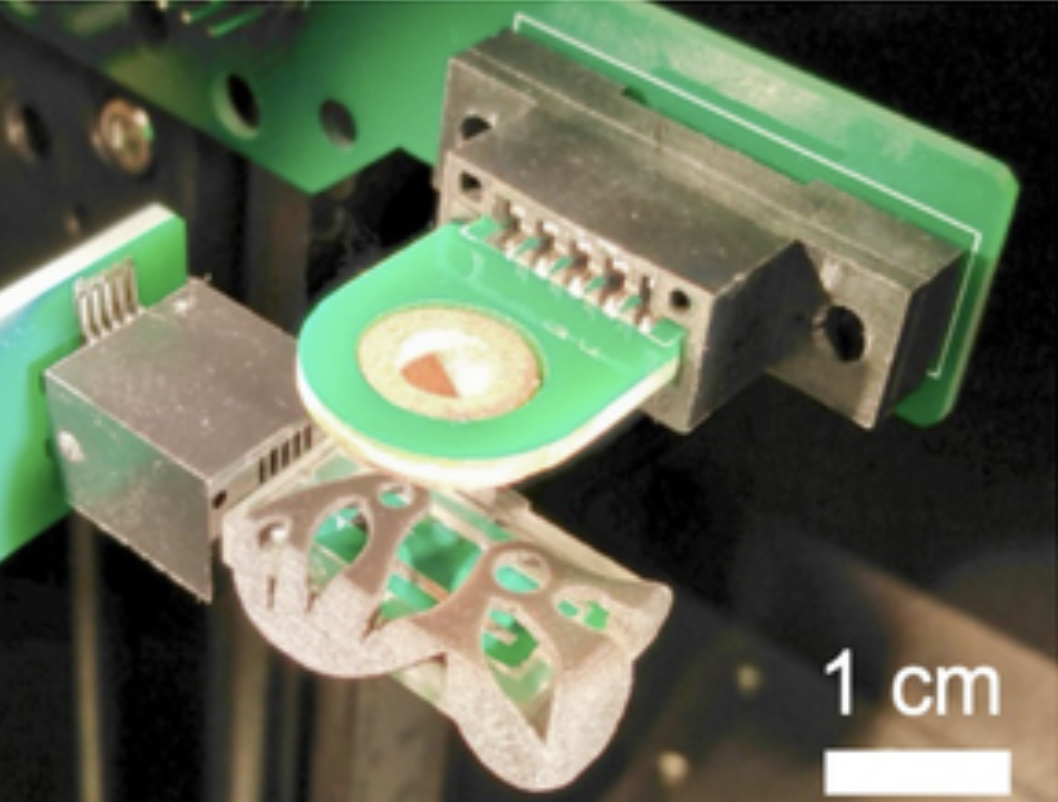
Alex Kachkine, and Luis Fernando Velásquez-García
https://doi.org/10.1021/jasms.3c00409
Abstract:
We report novel 3D-printed electrospray sources for mass spectrometry (MS) that produce twice the signal strength of their mainstream counterparts. Leveraging 3D printing to fabricate in bulk nano- and microscale-featured electrospray emitters, this work shows a path for scalable integration in clinically relevant diagnostics. This solution improves the device performance by simultaneously tuning the surface hydrophilicity, solvent evaporation, and geometry. The emitters are made of stainless-steel (SS) 316L via binder jetting and coated in a conformal, hydrothermally grown zinc oxide nanowire (ZnONW) forest. The printed emitters are designed as surface mount devices that can be directly soldered to printed circuit boards with built-in digital microfluidics as part of an automated device assembly. The electrospray sources use a novel extractor electrode design that enables operation at ∼24% larger bias voltages compared with conventional MS cylindrical inlets. The 3D-printed electrospray emitters were characterized against their state-of-the-art counterparts (coated blades and paper spray). MS data from the 3D-printed electrospray emitters show detection of therapeutically relevant targets at 1 μg/ml concentrations with a variety of solvents; for nicardipine, such emitters attain 116% higher signal-to-noise ratios and far greater stability than their counterparts.
